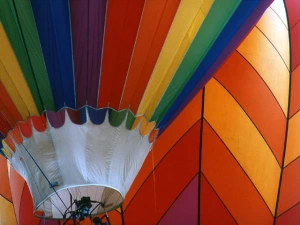[The following composition is also from one of my current 9th grade Latin 1 students. Once again, this student has written about something she loves and with which she has some level of expertise. Notice the significant, clear relationships between the triad of colored word patterns that represent the Latin (root word), it’s corresponding English derivative (similar spelling and meaning), and the definition of the original Latin word—all within the proximate context.]
___________________
Photography
Photography can be described as being able to take an image and present it in an artful manner on a photograph. The photographer can take an image and present it truthfully or he can twist it to make it artful and based on his own perspective and interpretation. Much like art, the viewer can interpret it differently because the photographer does not verify (veritas) the purpose of the photograph. In other photographs the meaning is very clear.
Photography starts with the kind of equipment the photographer uses. There are many books that instruct (instruo) new photographers on the correct equipment to use for different kinds of pictures. The basic kinds of cameras include film cameras, digital fixed-lens cameras, and digital SLR cameras. SLR stands for single-lens reflex, and they have different removable lenses. Most professionals use SLR cameras.
A good picture is made up of many key parts (pars). The components of a good picture are the exposure of light, balance, and most important, a love for photography. In order for a picture to become a masterpiece, the photographer must be diligent (diligo) in his work. The light that the picture is exposed to determines the clearness of the picture, the depth of field (focus), and how lucid (lux . . . lucis) the picture is. The exposure of light is determined by three things, the aperture, the shutter speed, and the ISO setting.
The aperture (aperio) is how much light the photographer allows to enter the camera through the lens. The aperture is an opening in the cameras lens that lets in only a certain amount of light; it is similar to the pupil of the eye in function. The size of the hole is called the F-stop. The larger the F-stop number, the less light is allowed into the picture. A good photographer must be able to distinguish the correct F-stop to use. Being able to discern (cerno) the correct F-stop to use is key in having the correct light exposure in the picture. The shutter speed also plays a large role in the light exposure. The shutter speed is how long the shutter stays open; this decides how long light will be exposed to the picture. The ISO is how sensitive the camera is to light. All of these are usually set to automatic on digital cameras, but sometimes the photographer must adjust things manually (manus) to change the picture to look how he wants it to look. Although the camera works just as efficiently when the photographer adjusts the setting by hand, it is more convenient (convenio) for all the settings to assemble themselves to fit together to make the perfect light exposure automatically. Depending on what the photographer wants in his picture, he must prioritize (prior) which part of the scene he would like to put in front and exalt in the picture. The photographer must also take proper care of his camera and not neglect (nego) protecting the lens from scratches and the rest of the camera from water and dirt. If the photographer decides to deny proper care of his camera, the camera could suffer serious damage.
In order for a photographer to be great, he or she must be sure that the picture is unique (unicus) in what it portrays. If the picture is one of a kind, then it will be magnificent (magnus). That is why there are so many different kinds of pictures out there. They have different things to say, and there are many opposites out there. The different photographer’s views on things are what make all the kinds of pictures so diverse. There are many contradictory (contra + dico . . . dictus) photographs that can be found anywhere. Sometimes the pictures that focus on the smallest things in life speak the loudest. There is no minimum (minimus) or maximum in photography. The photographer has a limitless boundary of images he can capture. However, the photographer cannot be timid (timeo) when he is taking pictures. If the photographer is afraid to present a picture because the picture is too discriminated compared to average pictures, he may miss a great opportunity.
If a photographer ever wants to become magisterial (magister) in what he does, he must show great interest (intersum, interesse . . .) in photography. When a photographer really wants to be among what he loves to do, he is more likely to put more labor into his work. When the photographer greatly elaborates (laboro) detail and perfection in his picture, he is sure to become a master photographer if he keeps on striving to become better.

